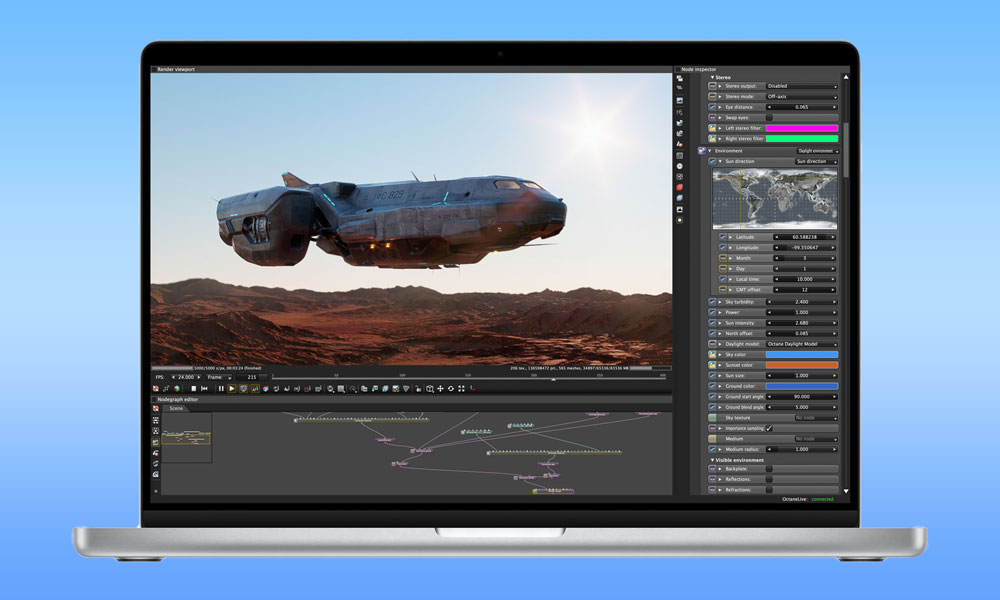New 16-inch MacBook Pro Has Exclusive High Power Mode for ‘Extreme Performance’
 Credit: Apple
Credit: Apple
Toggle Dark Mode
Earlier this week, Apple unveiled its most impressive MacBook Pro lineup in recent history, combining insanely powerful new M1 Pro and M1 Max chips with a return to the glory days of the MacBook Pro — an era of expanded connectivity and usable function keys.
In fact, it’s almost as if the last five years of MacBook Pro history never existed. The last Intel-based 16-inch MacBook Pro ditched the highly problematic butterfly keyboard. Now Apple has come full circle in undoing pretty much every other unpopular change it’s made to its MacBook Pro since 2016, from eliminating the Touch Bar in favour of full-sized function keys to the return of discrete ports for HDMI, SD cards, and even the venerable MagSafe connector.
While it’s unclear how far Apple will go down that road with its lower-end MacBooks, it’s still a huge step in the right direction for power users, at least a few of whom held on to their 2015 models for dear life in hopes that this day would finally come.
Of course, there’s much more to these new MacBooks than just reversing the mistakes of the past five years, as they also pack in impressive 120Hz Mini-LED ProMotion displays and the most powerful CPUs and GPUs ever put into a Mac — chips that can hold their own against all but the most tricked-out desktop Mac Pro configurations.
For those opting for the 16-inch MacBook Pro, however, it looks like Apple has one more trick hidden up its sleeve to really make sure that it can deliver peak performance for serious professionals who really need it.
High Power Mode
Last month, the folks at 9to5Mac discovered references to a new “High Power Mode” in a late-stage beta of macOS 12 Monterey. While it was unclear at the time what that meant, Apple has now clarified exactly what it’s for.
The new High Power Mode is like a “Turbo” button that’s exclusive to the 16-inch MacBook Pro, and it’s designed to let users push the M1 Max to the max for the most extreme workloads.
As the name implies, it’s basically the opposite of Low Power Mode, which is also coming in macOS Monterey to help users conserve battery life, much like the corresponding feature on the iPhone and iPad.
On the other hand, High Power Mode decides to throw caution to the wind and take all the restrictions off. It’s intended for those times when you really don’t care about your battery — or better yet, you’re already plugged in — and you want to eke out every last teraflop of power that you can out of all 42 cores on the M1 Max.
The code in the macOS Monterey betas says the new mode will “optimize performance to better support resource-intensive tasks” and “may result in louder fan noise,” but there’s a good chance that you won’t actually need to use it all that often.
According to an Apple document unearthed by MacRumors, this mode is only for those extreme, edge-case scenarios where users require not just peak performance but sustained maximum performance. Apple describes it as being intended to deliver “extreme performance” for serious production work like colour grading 8K ProRes video.
It doesn’t appear that the High Power Mode will make the M1 Max run any faster, but rather it effectively “unrigs the system for silent running,” letting the chip get as hot as it needs to and let the fans run wild.
In concept, this is the same reason why the 13-inch M1 MacBook Pro can perform better than the M1 MacBook Air, even though both feature identical M1 chips. The MacBook Air has no fans, so when you throw a high-performance task at it that takes a long time to run, the chip heats up and has to slow down to prevent itself from melting. The same thing happens with the M1 MacBook Pro, except it can kick in the fans when the chip gets hot, letting it run at peak performance for longer.
What Else to Expect
Basically, last year’s benchmarks showed that the M1 MacBook Pro and M1 MacBook Air delivered the same peak performance. The only difference is that the MacBook Pro can deliver that performance for longer before it has to slow down and take a break.
It appears that the same will be true with the M1 Pro and M1 Max chips. So even though the new High Power Mode is exclusive to the new 16-inch MacBook Pro, users who opt for the same M1 Max chip in the 14-inch MacBook Pro should see the same peak performance for most routine tasks. The only difference is that the 16-inch model will be able to keep on going for longer when it’s in High Power Mode.
This is critically important for professional workflows, and it’s also why desktop systems like Apple’s Mac Pro have massive sets of fans inside. Those aren’t just there because Intel’s Xeon chips run much hotter.
In fact, the larger size of the 16-inch MacBook Pro likely offers slightly better cooling, to begin with, since it has room for a larger cooling system, yet the M1 Max chip is the same size and will generate the same amount of heat.
If you’ve already opted for the 14-inch MacBook Pro, there’s probably no reason to be disappointed by the lack of High Power Mode on the smaller MacBook Pro, as there’s a very good chance you’ll never need to use it.
Unless you’re working in creative fields like game development, animation, or cinematography, it’s likely you don’t even need a fraction of the power of the M1 Max chip in the first place, much less the extra power provided by High Power Mode.







